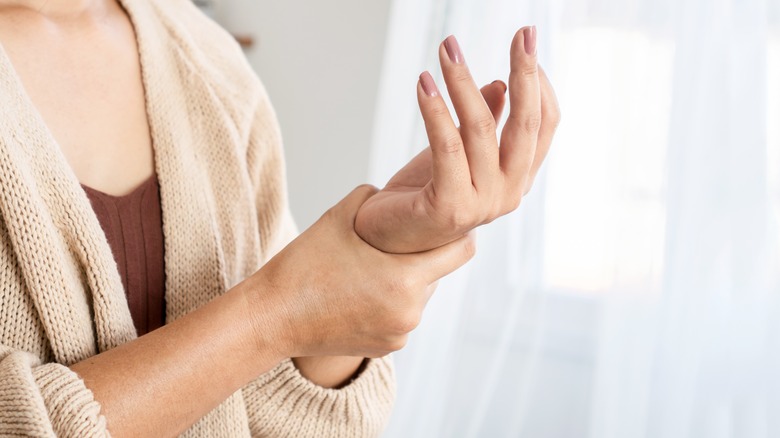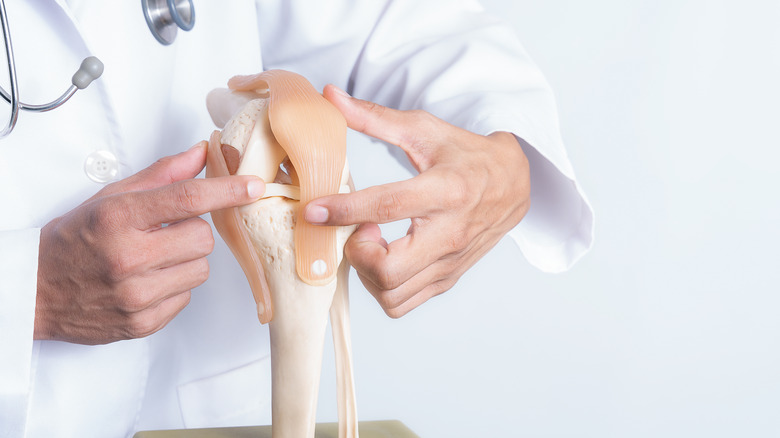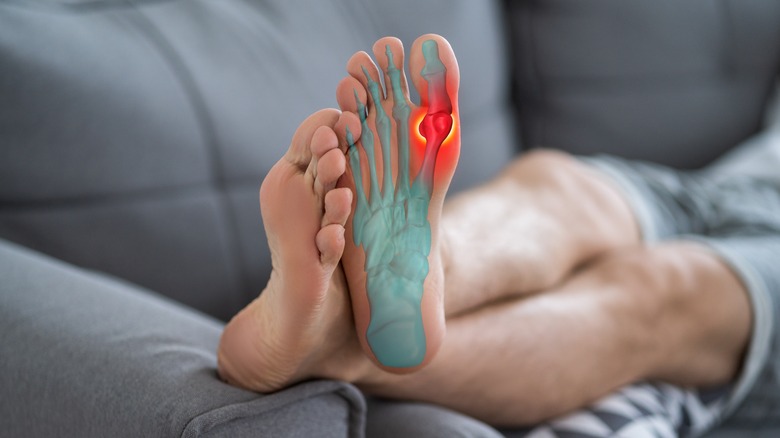What Happens To Our Joints As We Age?
The University of Rochester Medical Center defines a joint as a meeting point for two or more bones. According to Healthline, most babies begin with 270 bones. By their late 20s or early 30s, when bone mass is approaching maximum density, an adult skeleton has about 206 bones — but can boast between 250 and 350 bones, with about 80 in the axial skeleton and 126 in the appendicular skeleton, per Healthline.
A 2022 study published in the journal StatPearls notes that besides bones, joints comprise other essential features like connective tissues, fluid, cartilage, and collagens. These components support everyday activities and make up the infrastructure that helps you stand and move (via Cleveland Clinic). The International Osteoporosis Foundation describes bones and other parts of the joints as living tissues consisting of cells, minerals, proteins, and vitamins. This means they can transform, grow and wear out.
So what happens to our joints as we age? Aging comes with many changes in the body and our joints aren't an exception. Continue reading for a detailed guide on the changes to expect.
How does aging affect our joints?
According to Mayo Clinic, muscles naturally lose strength, endurance, and flexibility as we age. This will, no doubt, take a toll on our joints. Connective tissues, which support and bind other tissues together, get less oxygen and become stiff (via Medline).
Another change you might experience is fluid inadequacy. WebMD describes this as the kidney's inability to function optimally, leading to fluid imbalances, which can cause dehydration in seniors. A 2022 study published in the journal Frontiers in Nutrition notes that adequate water intake is essential to maintain bone health. Proper hydration supplies minerals like calcium and bicarbonate, which are essential for bone health, according to the study.
Cartilages that cushion your bones, allowing joints to grind smoothly against each other naturally, may also become stiff and naturally deteriorate as you age (via Healthline). That's why arthritis, which limits the activities of 23.7 million adults in the United States, is more prevalent among the country's older population, according to the Centers for Disease Control and Prevention.
There's also the issue of limited collagen. Medical News Today states that the body produces less collagen as you age. Collagen is known to provide strength and structure to your joints and other body systems.
How to protect aging joints
Aging is inevitable. While there's nothing you can do about growing old, adopting healthy lifestyle habits can keep your joints in good shape as you get older (via Healthline). Movement is the golden rule of joint health, according to WebMD. Frequent exercise is a great way to uphold this golden rule. Harvard Medical School also highlights the importance of minimizing stress on your joints. For the most part, try not to make things hard for yourself. You can use adaptive aids to avoid unnecessary bending, stooping, or reaching.
According to Cleveland Clinic, quitting smoking is another wise lifestyle choice. The source states that smoking can increase inflammation and make it harder for muscle injuries to heal. The same applies to people with weight disorders since they may lack the muscle bulk to stabilize joints. This causes stress on the joints with each activity, per Cleveland Clinic.
Generally speaking, the importance of joints to the body's optimal functionality can't be understated. Although our daily habits might influence bone health as we age, a 2000 study published in the Journal of Endocrinology notes that genetic factors can regulate bone mineral density, so you can also be susceptible to arthritis and other joint-related conditions through no fault of yours. For this reason, it's important to frequently engage health experts about your bone health as you age.



